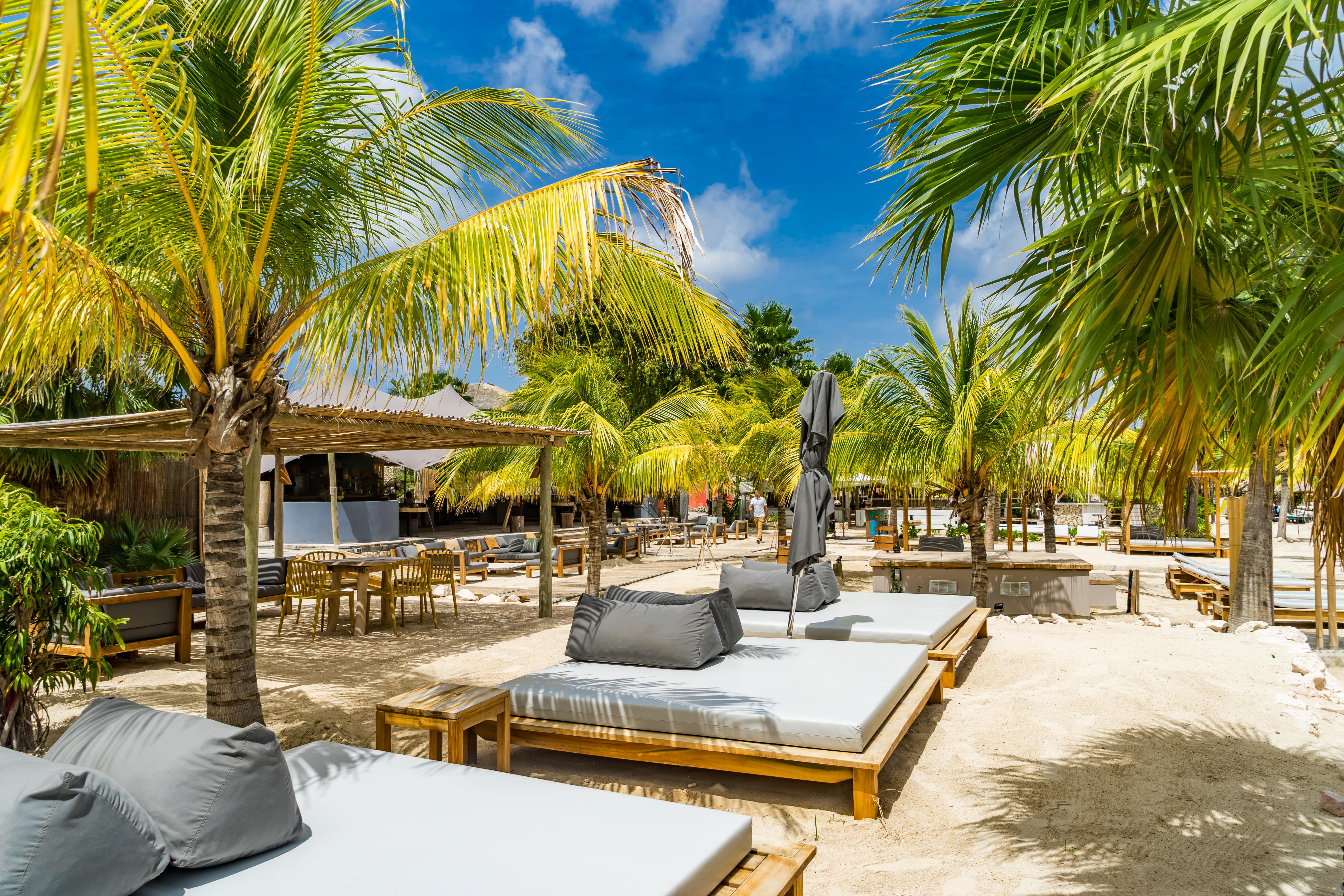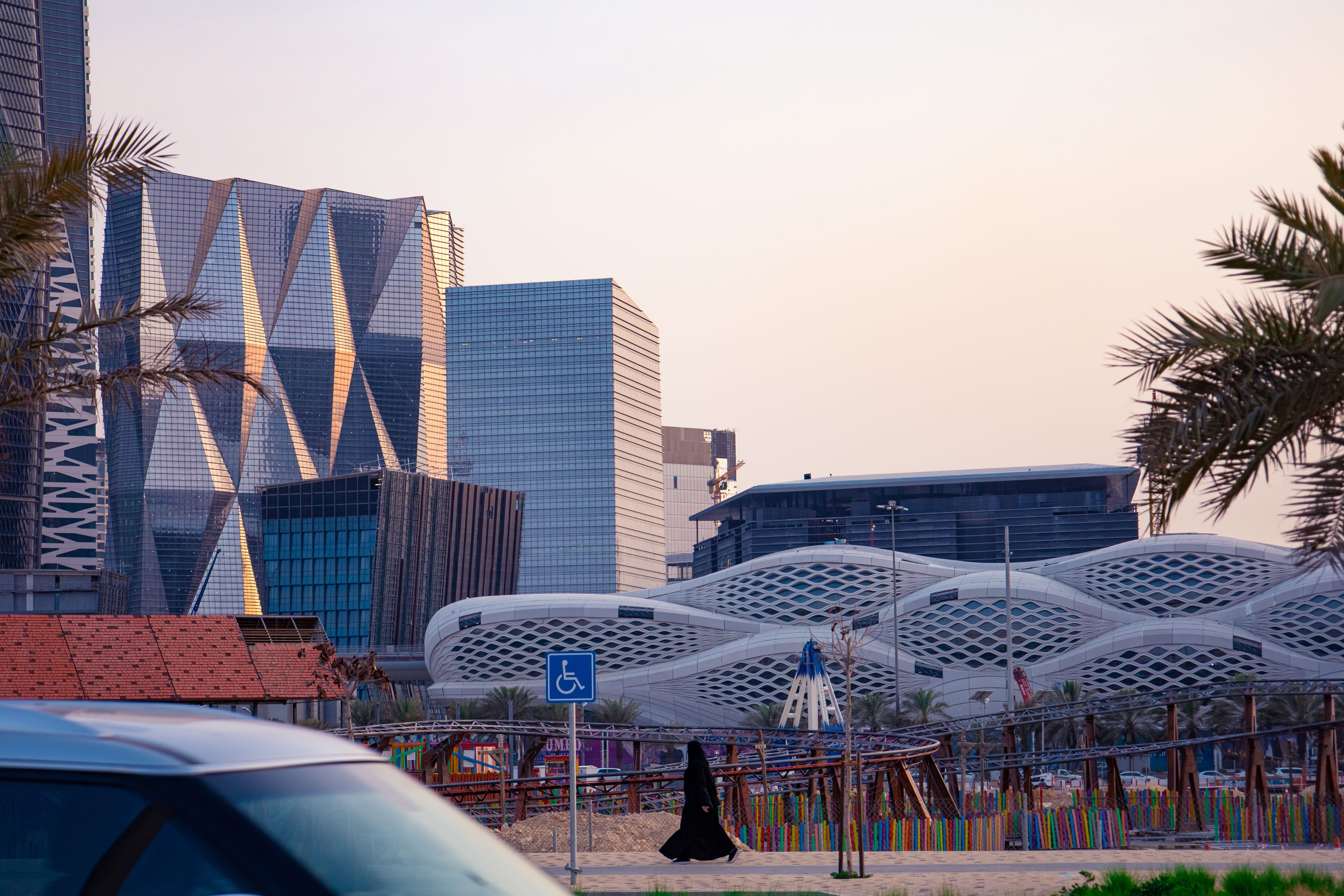Why Spain Remains a Top Destination for Sustainable and High-Quality Tourism in 2025
July 28th 2025
Spain is more than just flamenco, paella, and sunny beaches—it’s a destination that keeps evolving. In 2025, Spain isn’t just charming; it’s conscious. It’s a country where travellers can enjoy world-class experiences while knowing they’re making a positive impact.
Whether you're a beach lover, history buff, foodie, or nature seeker, Spain offers something special, with sustainability, safety, and soul at its heart.
Let’s explore what truly makes Spain one of the most beloved travel destinations today.
A Strong Recovery Fueled by Purpose
Spain’s return to the top of global travel charts isn’t just about more flights and full hotels—it’s about doing tourism better. After the setbacks caused by the pandemic, 2024 proved to be a turning point. Spain welcomed over 85 million international tourists, with the United Kingdom alone contributing nearly 18.4 million visitors. These Travellers didn’t just come in numbers—they spent generously too, with British tourists alone spending €22.55 billion.
But here's the inspiring part: Spain is prioritising quality over quantity. Rather than pushing for crowded beaches or packed city squares, the country is actively encouraging Travellers to explore more meaningful, less touristy experiences.
Government efforts and tourism boards, such as Turespaña, have focused on promoting rural tourism, eco-friendly stays, off-the-beaten-path adventures, and authentic cultural experiences. These initiatives help reduce pressure on over-touristed areas like Barcelona and Ibiza while spotlighting hidden gems in regions like Aragón, Extremadura, and Asturias.
Spain’s recovery also hinges on diversification. Travel is no longer limited to the peak summer months—shoulder seasons (spring and autumn) saw notable growth, as more Travellers seek to avoid the crowds and enjoy cooler weather. Airlines and tour operators have also boosted off-season offerings to make Spain a year-round destination.
Spain isn’t just bouncing back—it’s evolving. It’s proving that recovery doesn’t mean a return to old habits, but a bold shift toward sustainability, inclusivity, and intentional tourism. For travellers, this means better experiences, less crowd stress, and the joy of discovering a Spain that feels both fresh and familiar.
What Makes Spain the Go-To Holiday Spot for Travellers
So, what exactly makes Spain such a favourite among global travellers in 2025? The answer lies in how well it blends comfort, culture, and care into one unforgettable experience.
Safety & Peace of Mind
Spain is consistently ranked as one of Europe’s safest travel destinations. Cities are well-policed, healthcare access is excellent, and the roads and public transport systems are reliable and tourist-friendly. Whether you're walking in Seville’s old town or catching a train to Valencia, you feel secure.
Deeply Authentic Experiences
Spain offers travellers a chance to slow down and truly engage. Picture learning how to cook an authentic paella with locals in Valencia, or walking centuries-old pilgrimage paths on the Camino de Santiago. From traditional flamenco nights in Andalusia to olive oil tastings in Jaén, these are moments that stay with you.
Sustainability in Real Terms
Spain’s efforts to become an eco-leader in tourism are working. Many hotels now carry Biosphere or EU Ecolabel certifications, public transport networks are being electrified, and regions are investing in renewable energy-powered tourism. National parks like Doñana and Picos de Europa are strictly protected and offer low-impact activities like birdwatching and hiking.
Culinary Delights for Every Taste
Food is a celebration in Spain. With over 250 Michelin-starred restaurants and bustling markets like La Boquería in Barcelona or Mercado de San Miguel in Madrid, there's something for every taste and budget. Tapas, seafood, jamón ibérico, and regional wines make every meal memorable.
Cultural Wealth That’s Alive and Breathing
Spain has 49 UNESCO World Heritage Sites—more than almost any other country. But what’s truly special is how alive the culture feels: from street festivals like Las Fallas to intimate village traditions, Spain’s heritage is proudly on display—and warmly shared with visitors.
Sustainability in Action: More Than Just a Label
In Spain, sustainability isn’t just a tourism trend—it’s part of how the country thinks, builds, and welcomes. Travellers in 2025 can feel good knowing their adventures here are kinder to the planet and respectful of local communities.
Let’s start with where you stay. Spain is home to over 1,300 eco-certified hotels, carrying respected labels like the EU Ecolabel, Green Key, and Biosphere Responsible Tourism. These aren’t just badges—they represent real action: solar energy systems, low-water laundry services, plastic-free bathrooms, and locally sourced menus.
Getting around? Easy and green. Barcelona, Seville, and Valencia have developed bike-friendly streets and wide cycling lanes. Electric scooters and rental bikes are everywhere. Spain’s rail network, including the high-speed AVE trains, runs on increasing levels of renewable energy, so you can explore the country quickly and cleanly.
Spain also takes nature conservation seriously. The country boasts 15 national parks and over 100 nature reserves, from the dramatic cliffs of Cabrera Archipelago to the wetlands of Doñana National Park, home to flamingos, lynxes, and rare birds. Most parks have visitor limits and guided eco-tours to minimise impact.
Island destinations like Mallorca, Ibiza, and Menorca are also stepping up, with waste management initiatives, bans on single-use plastics, and renewable energy targets.
In rural areas, sustainability gets personal. Stay at a family-run vineyard, enjoy organic olive oil tastings, or hike along zero-impact trails. These slow travel experiences not only reduce your footprint but also help preserve local traditions.
Spain for Every Season: Beyond Just Summer
If you think Spain is just a summer beach destination, it’s time to think again. One of the country’s best-kept secrets? Spain is amazing all year round, with something different (and less crowded) to enjoy each season.
Winter in Spain isn’t just about cosy cities and tapas by the fire. It’s also for snow lovers! You can ski in the Pyrenees or the Sierra Nevada, where the season runs from December to April. And after a morning on the slopes, enjoy sunny afternoons in nearby towns. Bonus? Prices are often lower than in Alpine resorts.
Spring brings a burst of colour and celebration. In Córdoba, the city transforms with patios full of flowers during Festival de los Patios, while Valencia comes alive with Las Fallas, a fiery week of parades, fireworks, and art. Mild weather makes it ideal for city hopping, hiking, and exploring the countryside vineyards.
Summer is classic Spain—beaches in Costa del Sol, island hopping in the Balearics, and long daylight hours perfect for late-night tapas. But instead of just heading to tourist-heavy spots, consider quieter coastal gems like Cadiz, Almeria, or Asturias.
Autumn is wine country to shine. La Rioja, Ribeira Sacra, and Penedès are in full harvest swing. The air is crisp, the landscapes glow gold and orange, and seasonal dishes like wild mushrooms and roasted chestnuts fill menus.
And here’s a Traveller’s tip: Shoulder seasons (spring and fall) are cheaper, quieter, and cooler. In 2024, Spain saw an 18% rise in off-peak bookings, as more Travellers discovered how pleasant—and peaceful—non-summer trips can be.
Whatever the season, Spain delivers. All you have to do is pick your month, pack accordingly, and let the country surprise you.
A Culinary Journey Like No Other
Food in Spain isn’t just about eating — it’s a celebration, a way of life, and often, the highlight of any trip. Every region has its unique flavours, dishes, and culinary traditions. Whether you're sharing tapas in Seville, tasting octopus in Galicia, or savouring paella straight from a seaside kitchen in Valencia, each bite tells a story that’s been passed down for generations.
What makes Spain’s food culture truly special is its deep commitment to local ingredients and traditional cooking methods. You won’t find processed fast food dominating here. Instead, locals visit their neighbourhood markets daily to pick up fresh vegetables, seafood, cheeses, and olives—many of which are grown or caught just a few miles away.
Eating in Spain is also a social experience. Meals are slow and shared—whether it's a family-stle dinner or a spontaneous round of pintxos with friends in San Sebastián. You’re not just filling your stomach; you’re connecting with the culture.
And for eco-conscious Travellers, there’s good news: Spain is embracing sustainable gastronomy. More and more restaurants are going green by offering plant-based dishes, using local seasonal produce, and reducing food waste through smart kitchen practices. Zero-waste restaurants, especially in Barcelona and Madrid, are leading the way.
Want to take it further? Try a food tour, sign up for a local cooking class, or visit a working olive oil farm. These experiences aren’t just tasty—they give you a deeper connection to the land and people.
In Spain, food feeds the soul. Every dish is a chance to explore history, culture, and community—all in the most delicious way possible.
Cultural Experiences That Stick With You
Spain doesn’t just show you its culture—it invites you to live it. Every region tells a different story, and that diversity is one of the most exciting parts of Traveller here. Whether you're listening to soulful flamenco under starlit skies or learning to make pottery in a quiet coastal town, Spain offers rich, memorable experiences that go far beyond sightseeing.
Let’s start with Andalusia, in southern Spain. Here, the culture is bold and beautiful. Watch a live flamenco performance in Seville, explore the Moorish marvels of the Alhambra in Granada, or sip tea in an Arabic-stle café. The region’s mix of Arab, Jewish, and Christian history creates a colourful tapestry that’s felt in its architecture, music, and even food.
Head north to the Basque Country, and the vibe changes. It’s cooler, greener, and full of creativity. You’ll find Guggenheim Bilbao, rolling hills, and incredible pintxos bars, where each snack is a work of art. Many visitors take cider tours or explore the fishing villages along the rugged coast.
In Catalonia, it’s all about bold design and street life. Stroll down Barcelona’s La Rambla, visit Gaudí’s Sagrada Família, or enjoy live music in a neighbourhood plaza. Art, passion, and independence are strong themes here.
Further inland, Castile offers old-world charm. Think medieval towns, Gothic cathedrals, and hilltop castles. Cities like Toledo and Segovia feel like stepping into a history book.
Finally, the Canary Islands bring something different—volcanoes, black-sand beaches, and an eternal spring climate. It’s a place where you can hike through lava fields by morning and eat fresh seafood on the beach by evening.
Well-Connected, Easy to Explore
One of the biggest perks of Traveller in Spain? Getting around is incredibly easy, even if it’s your first time visiting. Whether you want to hop between major cities or wander into charming rural towns, the country’s transportation system makes it a breeze.
Let’s start with the skies. Spain has over 40 international airports, including major hubs like Madrid-Barajas (MAD), Barcelona-El Prat (BCN), and Malaga-Costa del Sol (AGP). In 2024, Spain saw a sharp rise in long-haul flights from the U.S., Canada, Latin America, and Asia. That means more direct routes, shorter travel times, and easier access from almost anywhere in the world.
Once you’ve landed, the AVE (Alta Velocidad Española) high-speed trains are your golden ticket to exploring. These sleek trains link cities like Madrid, Seville, Barcelona, Valencia, and Málaga—and they’re fast. For example, Madrid to Barcelona takes just 2.5 hours! Trains are clean, quiet, and often more relaxing than flying. Plus, they run on electricity, making them a greener travel option.
On a budget or heading somewhere off the beaten path? Spain’s regional buses and commuter trains offer a super affordable way to travel. Companies like ALSA and Avanza operate comfortable, air-conditioned buses to small towns, nature parks, and even beaches. You can often book last-minute tickets online or at the station.
For short trips, local metro systems, taxis, ride-hailing apps, and bike-share programs keep things simple. Most public transportation accepts contactless cards or mobile payments, too.
In short, Spain’s well-planned transport options mean you spend less time stressing and more time exploring.
Digital and Smart Travel Solutions
If you're a fan of tech making travel easier (or just hate feeling lost), Spain in 2025 is your dream come true. The country has fully embraced smart tourism, creating a digital experience that helps you explore with confidence, even if you don’t speak Spanish or know your way around.
First, let’s talk apps. Whether you’re booking a train, checking a museum schedule, or finding the nearest tapas bar, there’s an app for that. Renfe, Cabify, Moovit, and Google Maps cover public transport and rideshares. Apps like Visit A City or GuruWalk provide free city tours, itineraries, and local tips. Translation tools help bridge language gaps, making communication smooth for international Travellers.
Hotels are stepping up, too. Many now offer contactless check-in, room key apps, and digital concierge services. Want to skip the line at check-in or get local recommendations sent to your phone? Spain’s got you covered.
Museum visits are also getting an upgrade. Augmented reality (AR) is being used in iconic sites like the Alhambra and Museo del Prado. With a headset or phone app, you can see reconstructions of ancient ruins or artworks come to life—fun, educational, and perfect for all ages.
Even health and safety have gone digital. While COVID-era restrictions have eased, Spain has kept the smart tech: digital health certificates, Traveller safety updates, and QR codes for restaurant menus or event entry are now standard.
These tools aren’t just convenient—they make travel more accessible, especially for solo explorers or first-time visitors. Whether you're planning your next move or translating a menu, Spain’s digital infrastructure ensures you’re never really lost—you’re just one tap away from your next discovery.
Spain for Every Type of Traveller
No matter your travel stle or who you’re Traveller with, Spain rolls out the red carpet for everyone. The country is wonderfully diverse, offering something for every kind of traveller.
Families: Spain is a fantastic choice for families. Cities like Valencia, Malaga, and San Sebastián are safe, clean, and filled with family-friendly attractions—think interactive science museums, sandy beaches, and urban parks like Madrid’s Retiro or Barcelona’s Ciutadella. Restaurants are welcoming to children, and most towns have car-free zones perfect for stress-free walks with kids.
Solo Travellers: Travelling solo? Spain is ideal. Locals are warm and approachable, hostels are vibrant and social, and you’ll never feel alone. Whether you're exploring art museums in Madrid or joining a tapas tour in Granada, it’s easy to make connections. Many solo Travellers also hike the Camino de Santiago, meeting people from all over the world.
Couples: For romance, Spain is magic. Picture sipping wine at sunset in Ronda, walking hand-in-hand through the medieval streets of Toledo, or taking a hot air balloon ride over Segovia. Spa towns, wine routes, and coastal towns like Cadaqués offer intimate, quiet escapes.
Eco-Travellers: Spain is leading the way in green tourism. Stay in eco-lodges, visit organic farms, or go wildlife spotting in protected nature parks. From forest hikes to beach cleanups, your trip can be both fun and meaningful.
Digital Nomads: Remote workers love Spain for its reliable Wi-Fi, coworking cafes, and affordable living. Cities like Valencia, Las Palmas, and Granada have thriving digital nomad communities, and sunshine almost all year.
Emerging Trends: What’s Hot in 2025
Spain isn’t standing still—it’s embracing new kinds of tourism that go beyond beaches and city tours. In 2025, fresh travel trends are helping visitors connect with Spain in more personal, educational, and rejuvenating ways.
Language Travel: More Travellers, especially from countries like China, Brazil, and the U.S., are choosing Spain not just to relax, but to learn. Programs combining Spanish language courses with cultural experiences (like flamenco dancing or cooking classes) are on the rise. Popular study cities include Salamanca, Granada, and Madrid.
Sports Tourism: Sports are a big deal here. Whether you're catching a La Liga football match, visiting the Camp Nou in Barcelona, or attending the Madrid Open tennis tournament, there’s always something exciting going on. Cycling tourism is also growing fast, especially in regions like Catalonia and the Canary Islands, where scenic routes attract riders year-round.
Rural Getaways: The charm of small villages is back in stle. More Travellers are escaping the crowds and heading to lesser-known gems like Pueblos Blancos in Andalusia or the green hills of Galicia. Farm stays, countryside B&Bs, and slow travel experiences like cheese-making workshops or vineyard tours are helping visitors see a more authentic, peaceful side of Spain.
Wellness & Retreat Tourism: People are looking for balance, and Spain delivers. Whether it’s a yoga retreat in Mallorca, a spa escape in the Pyrenees, or forest bathing in Navarre, wellness travel is thriving. Many retreats offer digital detoxes, nature therapy, and organic, plant-based meals to help you truly unwind.
These trends reflect a shift toward deeper, more conscious travel. In 2025, Spain isn’t just a place you visit—it’s a place you experience, learn from, and reconnect with yourself in.
What Travellers Should Know Before Visiting Spain
Before you pack your bags and start dreaming about sangria at sunset or strolling through cobbled alleys, here are some practical, must-know tips that will help you enjoy Spain. These little details can make a big difference in how smooth and stress-free your trip turns out to be.
Currency: Euros Make the World Go Round
Spain uses the euro (€). Most major credit and debit cards are widely accepted, especially in cities, but it’s still smart to carry some cash, especially if you're heading to local markets, rural villages, or planning to buy souvenirs from street vendors.
For example, if you’re exploring small coastal towns in Andalusia, you may find charming cafés that don’t take cards or have a minimum charge. Grab a coffee and churros con chocolate guilt-free by having a bit of cash on hand.
Language: Spanish is Key, But Don’t Panic
The national language is Spanish (Castellano). In regions like Catalonia, the Basque Country, and Galicia, regional languages are also spoken, but don’t worry—English is commonly spoken in tourist areas like hotels, restaurants, museums, and transport hubs.
Still, learning a few basics like “Hola” (Hello), “Gracias” (Thank you), or “¿Cuánto cuesta?” (How much does it cost?) can go a long way. Locals appreciate the effort, and it makes you feel more connected.
What to Pack: Dress for the Region
Spain’s weather varies more than many Travellers expect.
If you're headed to the south in summer (e.g., Seville or Cordoba), pack light clothing, sunscreen, a hat, and sunglasses. It can get up to 40°C (104°F)! In contrast, northern Spain (like Galicia or the Basque Country) is cooler and may see rain, so a light jacket and waterproof shoes come in handy.
If you’re planning a spring road trip from Barcelona to the Pyrenees, pack layers—you could go from a sunny city day to a chilly mountain evening in a few hours.
Mind the Midday Sun (and Siesta)
Spain can get very hot, especially between 12 PM and 4 PM in summer. Locals know better than to fight it—that’s why the traditional siesta exists!
Shops and smaller restaurants in non-touristy towns may close for a few hours in the afternoon. Use this time to rest at your hotel, enjoy a long lunch, or relax indoors, especially if you're not used to the heat.
Friendly tip: Plan your outdoor activities for early morning or after 5 PM, when the light is golden and the temperatures are more comfortable.
Power Plugs & Tech Tips
Spain uses Type C and Type F plugs (the round, two-prong ones), and the standard voltage is 230V. If you’re visiting from the UK, the US, or anywhere that doesn’t use these plug types, you’ll need a universal travel adapter. Some hotels may lend you one, but it's best to bring your own to avoid any hassle, especially if you're charging multiple devices.
Also, public Wi-Fi is common in hotels, cafés, and airports, but consider buying a local SIM or eSIM card if you want to stay connected on the go. Data plans in Spain are quite affordable.
Festivals & Booking Tips
Spain loves its festivals—and they’re worth planning around. Events like La Tomatina in Buñol (August), Feria de Abril in Seville (Spring), or San Fermín (Running of the Bulls) in Pamplona draw huge crowds. While these can be incredible experiences, they also fill up hotels fast and raise prices.
So, if you're visiting during peak season or festival periods, be sure to book your car rentals, stays, and activities well in advance. For example, if you’re planning to rent a car in Spain in July to explore the Costa Brava, booking 1–2 months ahead could save you money and guarantee availability.
Final Tip: Travel Like a Local, Think Like a Traveller
The best way to enjoy Spain is to slow down, stay curious, and go beyond the obvious. Whether you’re sipping cava in Catalonia, hiking coastal trails in Asturias, or getting lost in a maze of Moorish streets in Granada, Spain rewards the Traveller who takes the time to explore thoughtfully.
Keep these tips in mind, and you’ll enjoy not only a fun and memorable trip but also a respectful, comfortable, and enriching experience.
Conclusion: Why Spain Is Still the Traveller’s Favourite in 2025
So, what makes Spain the go-to holiday spot for Travellers year after year? It’s the perfect blend of passion and practicality. You get to soak in sunshine, culture, and food—but also make ethical, meaningful travel choices.
In 2025, Spain is not only delivering what Travellers love—it's doing it smarter, greener, and with more heart than ever before.
If you're dreaming of a trip where you can relax, explore, learn, and connect—all while leaving a positive impact—then Spain is calling.
































































